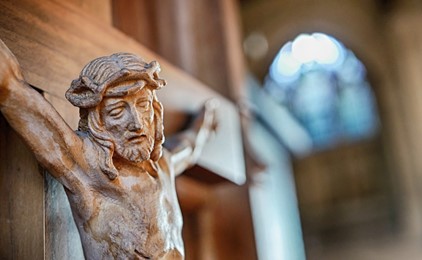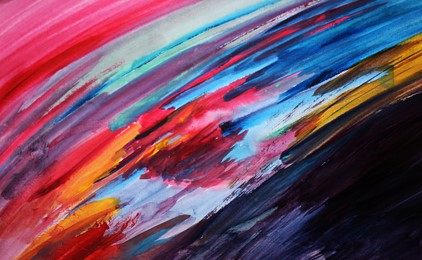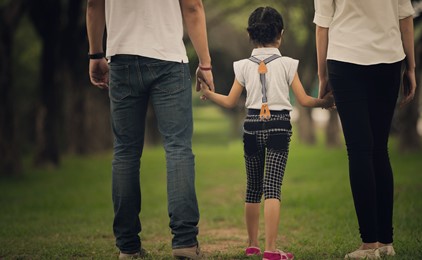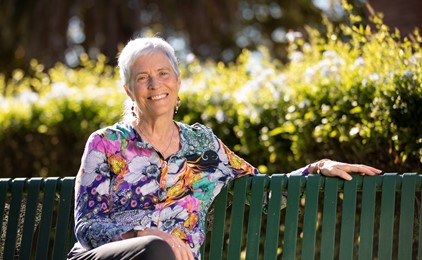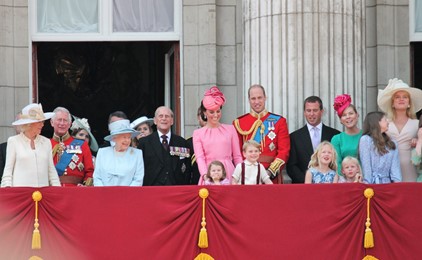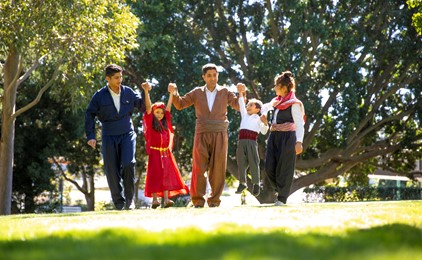Jesus wasn't white
I grew up in a Christian home where a picture of Jesus hung on my bedroom
wall. I still have it. It is schmaltzy and rather tacky in that 1970s kind of way, but as a little girl I loved it. In this picture, Jesus looks kind and gentle; he gazes down at me lovingly. He is also light-haired, blue eyed, and very white.
There is a problem here. Jesus was not white. You’d be forgiven for thinking otherwise if you’ve ever entered a Western church or visited an art gallery. But while there is no physical description of him in the Bible, there is also no doubt that the historical Jesus, the man the Roman state executed in the first century CE, was a brown-skinned, Middle-Eastern Jew.
This is not controversial from a scholarly point of view, but somehow it is a forgotten detail for many of the millions of Christians in today’s word. In Australia, Christians who attend church will mostly encounter Jesus depicted as a white man who looks like Anglo-Australians. This image is easily identifiable for other Anglo-Australians.
This is the case in mainstream media too. Think for a moment of the rather dashing Jim Caviezel who played Jesus in Mel Gibson’s The Passion of the Christ. He is an American actor. Or call to mind some of the most famous artworks of Jesus’ crucifixion – Rubens, Grunewald, Giotto – and again we see the European bias in depicting a white-skinned Jesus.
Does any of this matter, you might ask. Yes, it really does. As a society we are well aware of the power of representation and the importance of diverse role models.
After winning an Oscar in 2014 for Best Supporting Actress for her role in 12 Years a Slave, Kenyan actress Lupita Nyong’o shot to fame. In interviews since then, Nyong’o has repeatedly articulated her feelings of inferiority as a young woman because all the images of beauty she saw around her were of lighter-skinned women. It was only when she saw the fashion world embracing Sudanese model Alek Wek that she realised black could be beautiful too.
If we can recognise the importance of ethnically and physically diverse role models in our media, why can’t we do the same for faith? Why do we continue to allow images of a whitened Jesus to dominate?
Of course, many churches and cultures do depict Jesus as a brown or black man. Orthodox Christians usually have a very different iconography to that of European art, and if you enter a church in Africa, you’ll most likely see an African Jesus on display. But these are rarely the images we see in Australian Protestant and Catholic churches, and it is our loss.
It allows the mainstream Christian community to separate their devotion to Jesus from compassionate regard for those who look different. It creates a cognitive disconnect where one can feel deep affection for Jesus but little empathy for a Middle-Eastern person. Historically, the whitewashing of Jesus contributed to Christians being some of the worst perpetrators of anti-Semitism and it continues to manifest in the “othering” of non-Anglo Saxon Australians.
As we consider a world where the Covid pandemic is ravaging countries such as India and Brazil, I can’t help but wonder what our response might be if we just remembered that Jesus was brown skinned too?
How might our attitude towards refugees change if we recalled that the body that hung on the cross was a brown body: one that an oppressive regime, tortured, broke, and publicly executed. Perhaps we might recognise that the unjust imprisonment, abuse, and execution of the historical Jesus has more in common with the experience of Aboriginal and Torres Strait Islanders, or refugees fleeing terrorism, than it does with those who hold power in the Church and usually represent Christ.
What might change if we were mindful that the person Christians celebrate as God in the flesh and Saviour of the world was never a white man, but a brown-skinned, Middle-Eastern Jew?
Robyn J. Whitaker is a Senior Lecturer in New Testament, Pilgrim Theological
College, University of Divinity. Parkville, Victoria.
This was originally published on The Conversation on 29 March 2018, and updated in May this year.
Heal thyself with right-brain yarns
Expressive art therapy integrates all of the arts in a safe, non-judgmental setting to facilitate personal growth and healing. To use the arts expressively means going into our inner realms to discover feelings and to express them through visual art, movement, sound, writing or drama. This process fosters release, self-understanding, insight and awakens creativity and transpersonal states of consciousness. (Natalie Rogers, PhD, REAT)
Separation is for parents, not children
Family structures are more diverse than ever before. The entity we call the “the family unit” can comprise a whole range of people – mum, dad, stepdad, stepmum, foster parents, grandparents – the list is endless.
Divorcees have options
… to have and to hold from this day forward, for better, for worse, for richer, for poorer, in sickness and health, until death do us part.
Connecting the rituals
When our two sons were in preschool, I would often ask them about their day. Their responses were not dissimilar to those you might expect; “good,” and “boring” were quite common, and on a particularly interesting day it might even extend to “fun”.
Families are back in the news
The recent death of Prince Philip, the Duke of Edinburgh, has sparked wall-to-wall media coverage in celebration of his life. His death at 99 years of age was expected, due to his failing health. However, I have been surprised at the sentiment and coverage that has flowed from every source imaginable.
Marriage and its blessings
Marriage has been around longer than the Church. Societies have had ways of ritualising the pairing of a couple from time immemorial.
Beach and barbies replace conflict
Living in a safe country such as Australia is something we often take for granted, but Khurshid Sarokhan could not feel more thankful to live in a society free from conflict.
